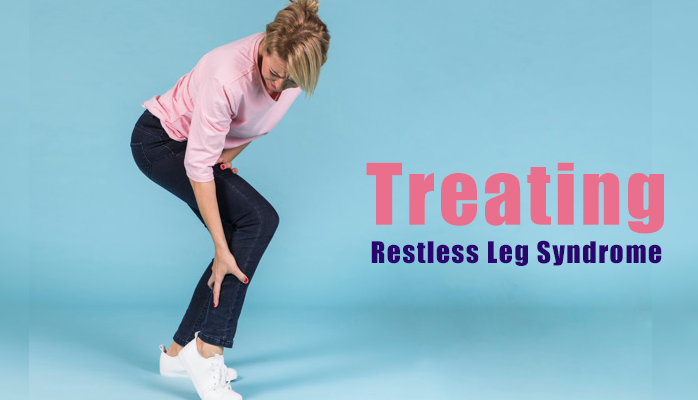Restless leg syndrome (RLS) is a nervous system disorder that causes discomfort in the legs and other extremities throughout the night, and may affect up to 10% of the U.S. population [WebMD]. This discomfort is described as tingling sensations throughout the extremities that are severe enough to interfere with sleep.
This leads to the primary consequence of RLS, sleep deprivation. The discomfort in the legs is only relieved by moving them, which continues to awaken the person suffering from RLS. The worse the sleep deprivation, the worse the RLS symptoms; a vicious cycle that continues and negatively impacts the sleeper.
There are varying severities of RLS which affect the severity of sleep deprivation. Those with mild to moderate symptoms may go undiagnosed for prolonged periods of time and experience mildly disruptive symptoms. However, those with moderate to severe symptoms may suffer from extreme sleep deprivation and have their condition diagnosed much quicker.
Treating Restless Leg Syndrome
Unfortunately, the causes of RLS are relatively unknown, and in consequence there are no direct treatment for it. That being said, we know that there are things you can do that may significantly decrease your chances of developing RLS, the frequency or the severity.
Some treatments used in mild to moderate cases of RLS are targeted at lifestyle changes such as:
- Beginning regular exercise
- Developing good sleeping patterns/habits
- Reducing the use of stimulants
- Reducing the consumption of alcohol and tobacco
Non-lifestyle treatment methods include:
- Leg massages
- Hot baths and/or ice packs
- A vibrating pad
In some cases drugs may be used, but the effects may relieve or worsen your RLS and the effectiveness may decrease over time.
What Causes RLS?
The causes of restless leg syndrome are unknown, though science has illuminated some pertinent information and risk factors for developing RLS:
- Genes
- Certain diseases, such as anemia, Parkinson’s, and diabetes
- Medications, such as antinausea drugs or antipsychotic drugs
- Pregnancy, especially in the third trimester
- Sleep deprivation
- Female sex
- Older age
In some cases, like onset during pregnancy or after sleep deprivation, RLS may go away naturally. In other cases, RLS may be a chronic problem without treatment.
Symptoms of RLS

(RED) Sleep of someone with RLS || (BLUE) Normal sleeping pattern
The primary symptom of RLS is discomfort in the legs that range in severity, can be constant or intermittent, and may be intolerable.
When the discomfort is enough to interfere with sleep, it is considered a sleeping disorder. The discomforting sensations can be described as:
- Aching, throbbing, or burning
- Cramping (especially in calves)
- Jerking
- Buzzing or vibrating feelings
- Itchy feeling
- Feeling of pins and needles
- Creepy crawly feeling
- Irresistible urge to move your leg to relieve the discomfort
The more mild the symptoms, the more challenging diagnosing symptoms may be. So those with more severe symptoms may receive an earlier diagnosis than those with less severe symptoms. If these symptoMs sound familiar, and you are concerned that you have RLS, the please click the blue button below to speak with a sleep specialist ASAP.


